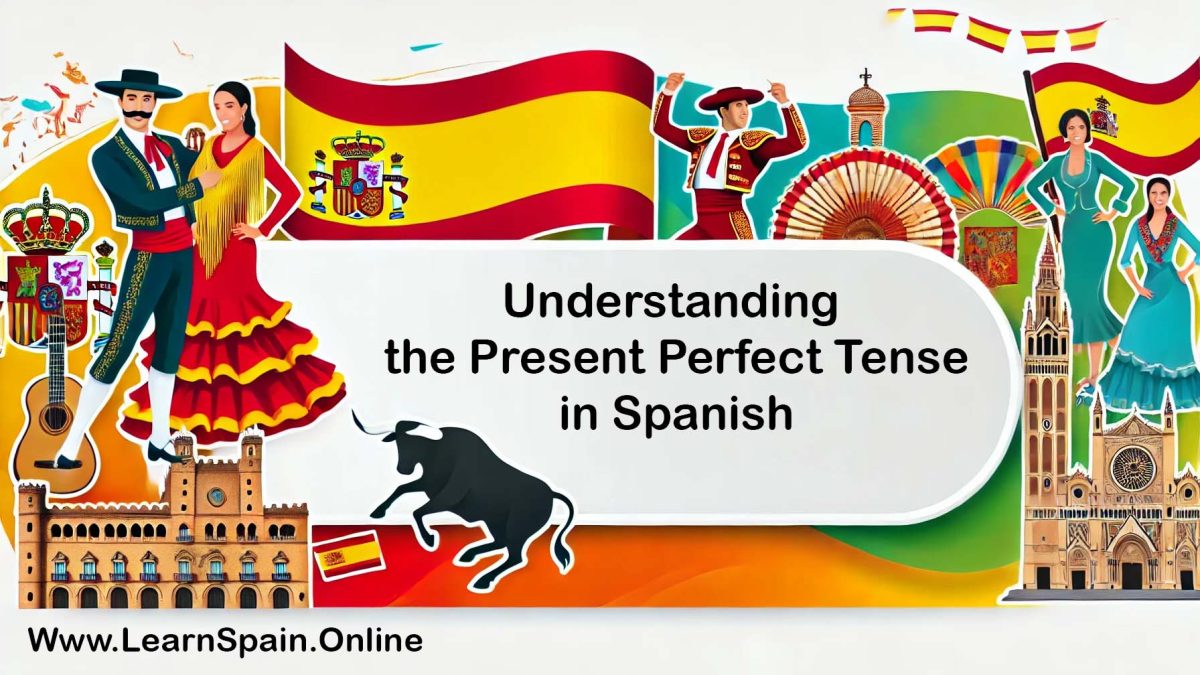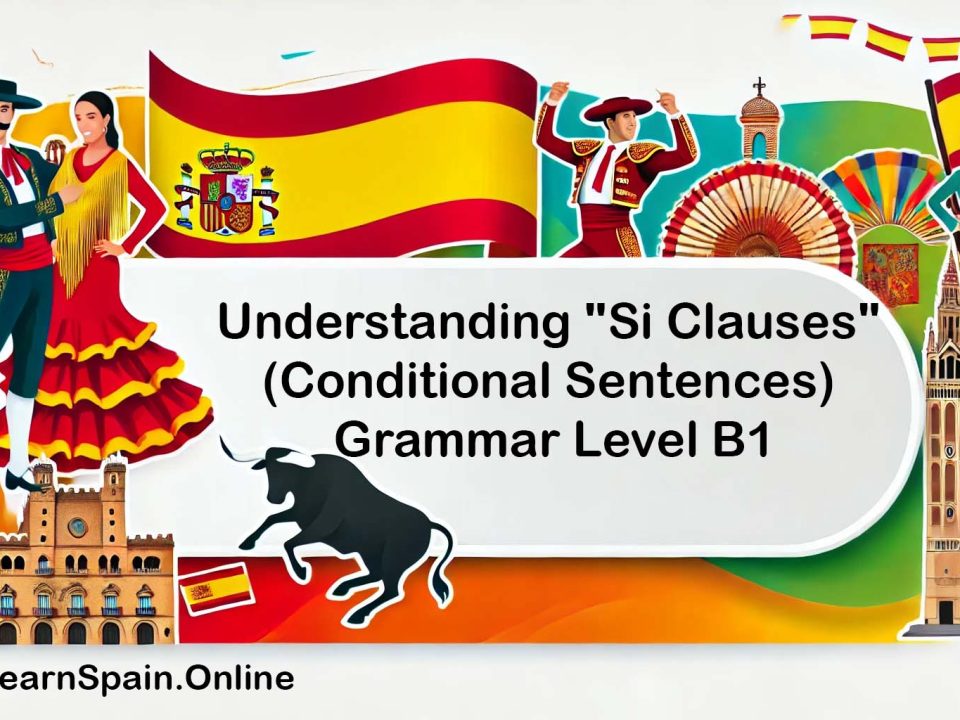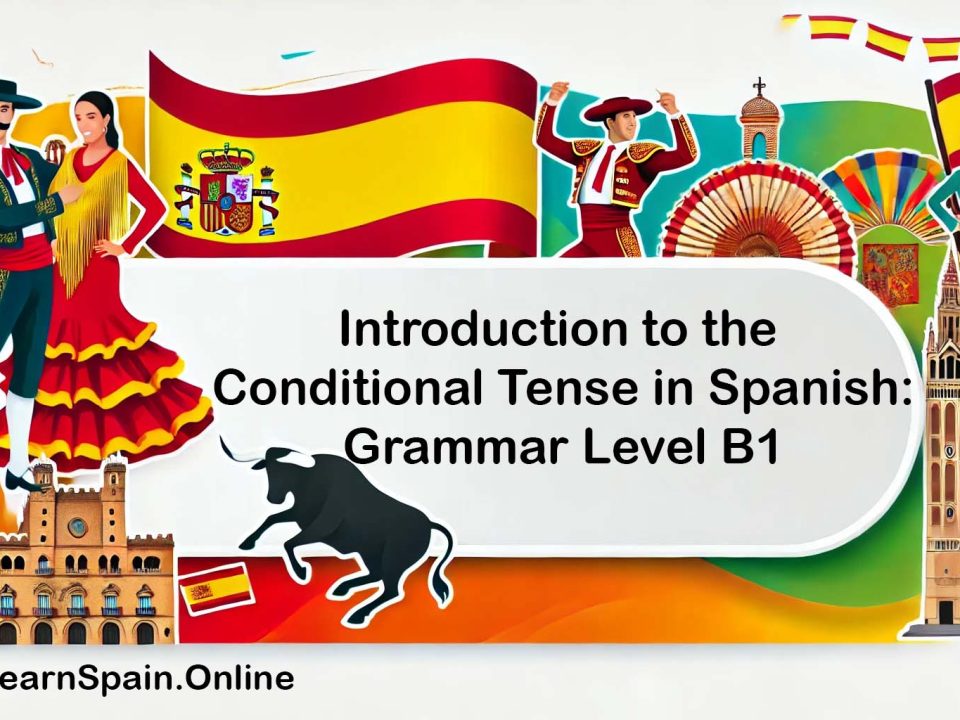
Understanding “Si Clauses” (Conditional Sentences) in Spanish: Grammar Level B1
August 27, 2024
Advanced Uses of “Ser” and “Estar” in Spanish: Grammar Level B2
August 28, 2024Understanding the Present Perfect Tense in Spanish: Grammar Level B1
The present perfect tense, or pretérito perfecto compuesto in Spanish Grammar, is an essential part of the language that allows you to talk about actions that have been completed at some point before now, but that are still relevant or have a connection to the present. At a Spanish Grammar B1 level, mastering the present perfect tense is crucial for communicating effectively in both written and spoken Spanish, as it is commonly used in everyday conversations, narratives, and formal writing.
This article will delve into the structure, usage, and nuances of the present perfect tense, along with numerous examples to help you grasp its application in different contexts.
What is the Present Perfect Tense?
The present perfect tense in Spanish is used to describe actions or events that have occurred recently or at an unspecified time in the past, with a direct link or relevance to the present moment. It is often translated to English as “have done” or “has done.”
Example in English:
- I have eaten.
- She has traveled.
Equivalent in Spanish:
- He comido.
- Ella ha viajado.
Structure of the Present Perfect Tense
The present perfect tense is formed by combining the present tense of the auxiliary verb haber (to have) with the past participle of the main verb.
Conjugation of the Auxiliary Verb Haber:
- Yo he (I have)
- Tú has (You have – informal)
- Él/Ella/Usted ha (He/She/You have – formal)
- Nosotros/Nosotras hemos (We have)
- Vosotros/Vosotras habéis (You all have – informal, Spain)
- Ellos/Ellas/Ustedes han (They/You all have – formal)
Formation of the Past Participle:
The past participle in Spanish is formed by adding -ado to the stem of -ar verbs, and -ido to the stem of -er and -ir verbs.
Examples:
- Hablar (to speak): hablado (spoken)
- Comer (to eat): comido (eaten)
- Vivir (to live): vivido (lived)
Irregular Past Participles
While many verbs follow the regular pattern for forming the past participle, there are several common verbs with irregular past participles that you need to memorize.
Examples of Irregular Past Participles:
- Abrir (to open): abierto (opened)
- Decir (to say): dicho (said)
- Escribir (to write): escrito (written)
- Hacer (to do/make): hecho (done/made)
- Morir (to die): muerto (died)
- Poner (to put): puesto (put)
- Romper (to break): roto (broken)
- Ver (to see): visto (seen)
- Volver (to return): vuelto (returned)
Using the Present Perfect Tense
The present perfect tense is used in various contexts in Spanish. Here are the main uses, along with examples, to help you understand when and how to use this tense effectively.
1. Actions That Happened at an Unspecified Time
The present perfect is often used to talk about actions that occurred at some point in the past, but the exact time is not specified. These actions are relevant to the present moment.
Examples:
- He visitado París. (I have visited Paris.)
- Hemos terminado el proyecto. (We have finished the project.)
- Ella ha leído ese libro. (She has read that book.)
- ¿Has visto mi teléfono? (Have you seen my phone?)
- Han viajado a España. (They have traveled to Spain.)
2. Recent Actions
The present perfect is commonly used to describe actions that have occurred recently, often within the same day or a short period before the present.
Examples:
- He desayunado hace una hora. (I have had breakfast an hour ago.)
- ¿Has hablado con tu madre hoy? (Have you talked to your mother today?)
- Acabo de ver a Juan; ha llegado a la oficina. (I just saw Juan; he has arrived at the office.)
- Nos hemos encontrado con ellos esta mañana. (We have met with them this morning.)
- Ella ha salido hace poco. (She has left recently.)
3. Life Experiences
The present perfect is used to talk about experiences that someone has had up to the present moment. It often answers questions like “Have you ever…?”
Examples:
- ¿Has estado alguna vez en México? (Have you ever been to Mexico?)
- He comido sushi muchas veces. (I have eaten sushi many times.)
- Nunca he visto una película tan emocionante. (I have never seen such an exciting movie.)
- Hemos vivido en varios países. (We have lived in several countries.)
- Ellos han participado en muchas conferencias. (They have participated in many conferences.)
4. Actions That Continue into the Present
When an action started in the past and continues up to the present, the present perfect tense is used to emphasize the ongoing nature of the action.
Examples:
- He trabajado aquí desde 2015. (I have worked here since 2015.)
- Hemos vivido en esta casa durante diez años. (We have lived in this house for ten years.)
- Ella ha estudiado español durante cinco años. (She has studied Spanish for five years.)
- Han sido amigos desde la infancia. (They have been friends since childhood.)
- ¿Cuánto tiempo has estado esperando? (How long have you been waiting?)
Present Perfect Tense vs. Preterite Tense
One of the challenges of mastering the present perfect tense in Spanish is knowing when to use it instead of the preterite tense, which is used to describe completed actions in the past. The key difference lies in the relevance of the action to the present moment.
Present Perfect Tense:
- Focus: The action’s relevance to the present.
- Example: He vivido en Madrid. (I have lived in Madrid. – Implies that it’s relevant to my current situation or experience.)
Preterite Tense:
- Focus: The action is completed, with no direct relevance to the present.
- Example: Viví en Madrid. (I lived in Madrid. – Refers to a specific period in the past, with no implied connection to the present.)
Common Expressions with the Present Perfect
Certain expressions are frequently used with the present perfect tense in Spanish. These include time markers and phrases that emphasize the connection to the present.
Examples:
- Alguna vez (ever): ¿Has comido paella alguna vez? (Have you ever eaten paella?)
- Nunca (never): Nunca he estado en Argentina. (I have never been to Argentina.)
- Ya (already): Ya hemos terminado la tarea. (We have already finished the homework.)
- Todavía no (not yet): Todavía no he recibido la carta. (I haven’t received the letter yet.)
- Recientemente (recently): He cambiado de trabajo recientemente. (I have recently changed jobs.)
Negative and Interrogative Forms
Forming negative and interrogative sentences in the present perfect tense is straightforward.
Negative Sentences:
To make a sentence negative, simply place “no” before the auxiliary verb haber.
Examples:
- No he visto esa película. (I haven’t seen that movie.)
- No hemos terminado el proyecto. (We haven’t finished the project.)
- Ella no ha leído el libro. (She hasn’t read the book.)
Interrogative Sentences:
To form a question, invert the subject and the auxiliary verb haber.
Examples:
- ¿Has visto a Carlos? (Have you seen Carlos?)
- ¿Han comido ustedes? (Have you all eaten?)
- ¿Ha llegado ya el paquete? (Has the package arrived yet?)
Practice Exercises
To reinforce your understanding of the present perfect tense, try the following exercises:
Translate the Sentences:
- I have never visited that museum.
- Nunca he visitado ese museo.
- Have you finished your homework yet?
- ¿Ya has terminado tu tarea?
- They have lived in three different countries.
- Han vivido en tres países diferentes.
- We have eaten at that restaurant several times.
- Hemos comido en ese restaurante varias veces.
- She has just left the office.
- Ella acaba de salir de la oficina.
Complete the Sentences:
- Nosotros (escribir) _ un informe sobre el proyecto. (We have written a report about the project.)
- Nosotros hemos escrito un informe sobre el proyecto.
- Ellos (ver) _ esa película tres veces. (They have seen that movie three times.)
- Ellos han visto esa película tres veces.
- Yo (no, estar) _ en la oficina hoy. (I haven’t been in the office today.)
- Yo no he estado en la oficina hoy.
- **¿(Tú, leer) _ el último libro de este autor?** (Have you read the latest book by this author?)
- ¿Has leído el último libro de este autor?
- Nosotros (vivir) _ en esta casa desde 2010. (We have lived in this house since 2010.)
- Nosotros hemos vivido en esta casa desde 2010.
Conclusion
The present perfect tense is a powerful and versatile aspect of Spanish grammar that allows you to talk about past actions with a connection to the present. By understanding the structure and various uses of the present perfect tense, you can greatly enhance your ability to communicate effectively in Spanish. Whether you’re discussing life experiences, recent actions, or ongoing situations, the present perfect tense will become an indispensable tool in your language arsenal. With regular practice and application, you will gain confidence in using this tense fluently in both spoken and written Spanish. ¡Buena suerte! (Good luck!)
Links:
Spain Grammar
Spain Vocabulary
Spain Listening
Spain Stories


